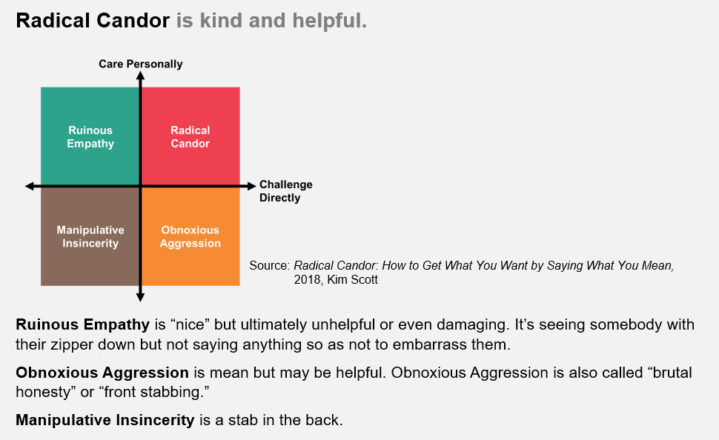Promoting Intimacy at Scale

In the current business environment, there is a plethora of tips and advice on how to communicate remotely in light of the COVID-19 virus. Much of the challenge as we switch to virtual working relates to connecting with people in a way that helps them feel cared for and gives them a sense of belonging. However, this is not a new issue, and while the current situation has put this into sharp relief, it is a key challenge for many senior leaders.
As they progress to more senior levels, how do senior leaders scale their impact and intimacy?
We know from research that connecting with someone in an intimate way drives a sense of belonging, engagement, and ultimately performance. The challenge of scaling intimacy is therefore paramount for many leaders, particularly as they work across the enterprise.
STEP 1: UNDERSTAND THE COMPONENTS OF INTIMACY AND WHERE YOU ARE STARTING FROM
Executives need to ask themselves how intimate and connected they are with their teams. Interestingly, it is not an easy question for executives to answer. When working with individuals and teams, we often use a trust equation whereby we lay out intimacy in more detail.
Trust = Intimacy x Competence/Risk
A simple but powerful exercise is to ask executives to rate local and extended teams on each of the following dimensions of intimacy:
- Affection: How much do you show you care about this person?
- Collaboration: Do you collaborate effectively together?
- Conflict: Do you engage in constructive conflict?
- Transparency: How much do you reveal thoughts and feelings to, and share information with, this person, and is it mutual?
- Predictability: Are you consistent and predictable in your actions toward them?
The lower the score, the more the executive needs to think about the levers they can pull to build intimate, close relationships.
STEP 2: DEMONSTRATE THE COMPONENTS OF INTIMACY
Know what you care about and show it.
A basic factor for many is knowing that their leaders care about them and the business. This helps motivate and engage people and connect them to their leaders. At RHR, we assess a lot of leaders and a question we often ask is, “What do you care about, and more importantly, how do people know you care?” It is surprising how many leaders struggle to answer these questions—not because they don’t care, but because they haven’t asked the question or stopped long enough to reflect on an answer. An important first step in demonstrating intimacy is being clear about what you care about as an individual and as leader.
Promote collaboration by highlighting what binds people together.
It is important for leaders to pull people together, and one of the best ways of doing this is highlighting what binds them together—their common purpose. At an individual level, being clear about purpose helps leaders show what they uniquely bring to the table, but at an organizational level, this promotes greater collaboration. It starts with why we do what we do. By talking about why, leaders create context so people see the value in what they are doing and feel part of something more meaningful and united. In a recent MIT study, 80% of the sense of purpose within the organization was generated by 20% of the leaders, which suggests that this is not something leaders are particularly good at. Leaders should talk about the why and emphasize the connectedness to their industry, their company, their customers, and each other.
Engage in constructive conflict.
Being engaged in constructive conflict can bring people closer together rather than further apart. Many leaders avoid conflict because they care. In reality, models such as Radical Candor highlight that good conflict management occurs at the intersection of caring personally and challenging directly. Caring personally means you care about the other person, not about whether you are winning a popularity contest. Challenging directly means you share your perspective and invite the other person to do the same. Intimate leaders engage in constructive conflict.

Transparently share thoughts and feelings by leveraging storytelling.
Authentically revealing thoughts and feelings across the enterprise is critical to building intimacy at scale. However, it is often very difficult for leaders with large egos and high achievement drives to admit mistakes. They might share their thoughts, but they are less likely to share their feelings. One of the most impactful and simplest ways of sharing feelings and demonstrating vulnerability is through storytelling. A culture of storytelling creates a great deal of intimacy. Leaders need to think about how to embed stories into their communications and meetings—for example, by highlighting stories on video or newsletters. Stories have the ability to drive the right behaviors and to connect people to similar experiences as well. For example, telling stories about partnership, risk-taking, or failures is a nice way to highlight one’s similarities with others. Share thoughts and feelings through stories and create a culture of storytelling.
Storytelling is as much a science as it is an art, and senior leaders need to become familiar with the formula, including:
- Critical signposting—make it interesting and give it a headline: Be clear in your mind how you want the other person to think, feel, and act at the end of your communication.
- Bring the characters to life: Make it personal (be mindful of being a central character and use it as a vehicle to highlight vulnerability).
- Create a mental picture for your audience; add substance; create credibility: Add details, outcomes, results, and feedback as you tell the story; don’t overdo the content or get distracted.
- Be clear on the takeaway: Be clear on the call to action, the implications, and the “so what?”
Be consistent and predictable in actions.
While for many this may be table stakes, it is a critical factor that builds intimacy and ultimately trust. People want their leaders to be consistent and predictable, as it feeds our intrinsic need for security. However, predictability is an underrated leadership capability and is often undervalued, especially in a world that champions agility. The reality is that predictability not only builds trust, but it also brings freedom for employees. If you can predict what your boss is going to do, it means you don’t have to spend as much energy managing that relationship and justifying your actions. Leaders need to be consistent and predictable. Start by being clear about your moral compass and what you stand for as a leader. Then, ask whether people can see this in the way you act.
STEP 3: LEVERAGE MULTIPLE VENUES AND TECHNOLOGY TO ENSURE SUSTAINED CONNECTIVITY
It is important for executives to think about the venues and mediums they have to demonstrate intimacy; this can include newsletters, videos, group lunches, town halls, handwritten notes, informal gatherings, etc.
In the current environment, there is a lot of emphasis on connecting during virtual meetings. RHR recently produced an article Together Apart: Teaming through a Time of Social Distancing, which focuses on how to create intimacy virtually, such as celebrating anniversaries and showing other members of the team around your home office.
In addition to virtual meetings, executives should look to experiment with different technologies, such as WhatsApp, Basecamp, Google Jamboard, and Google Hangouts. A powerful and effective medium for executives to get their voice out to the rest of the organization is video vignettes. Keeping them short (two minutes), unedited (imperfect), and filmed on a phone gives them an authentic feel and provides the opportunity for executives to share what they are thinking and feeling. We recently worked with a leader who created and shared a personal video when he was promoted to the head of marketing. It was brief but heartfelt, and he talked about his and his family’s reaction to the COVID-19 crisis. It was an effective tool for immediately engaging the heart despite the scale and geography of the team. Communicating at scale is about leveraging multiple venues and technologies. Leaders need to experiment.
STEP 4: BE DISCIPLINED AND FOCUSED, ESTABLISHING RITUALS THAT MAXIMIZE ENGAGEMENT
One of the secrets of scaling leadership is to become more disciplined in reaching out and connecting with the wider organization. It’s a bit like Brownian motion—as the particles get further apart, there is less chance they collide. In the same way, leaders need to orchestrate closeness by deliberately and intentionally reaching out to ensure their messages are heard and understood. This is difficult for some, as they rely on their charisma, not on planning and scheduling, to create close connection.
To create a habit or ritual, repetition is key—start with something specific and measurable and then repeat it regularly. There are no hard-and-fast rules on what to do, other than the actions should be planned and recorded so they become repetitive. Tips include:
- Create an internal stakeholder map
- Book time every Friday afternoon to connect with the top talent and find out what they care about
- Capture and record significant anniversaries
- Learn the names of your team members’ significant partners
- Every quarter/six months, visit those working on the shop floor and ask them for feedback
Scaling intimacy is not new; it is a key skill for all leaders, especially as they step into senior roles. It is about first understanding the components of intimacy and making sure these are regularly practiced so they become a habit or ritual, and then second, it is about experimentation and discipline to ensure it reaches across the organization.






